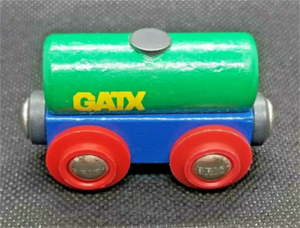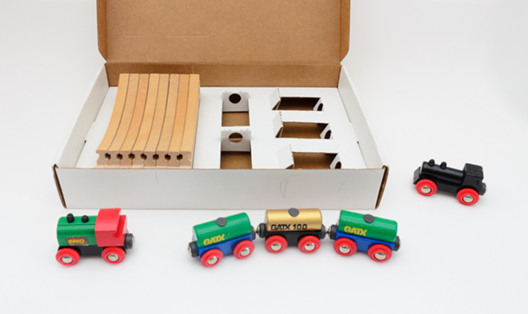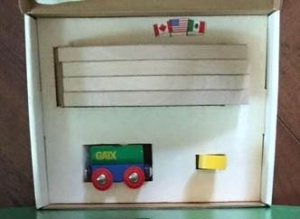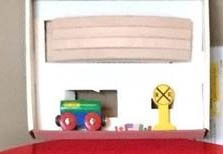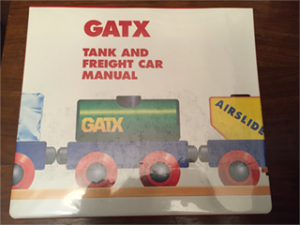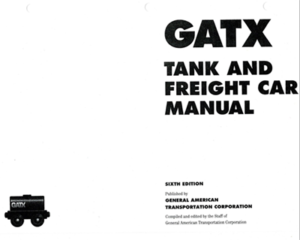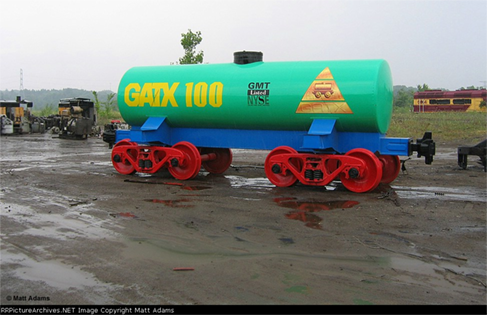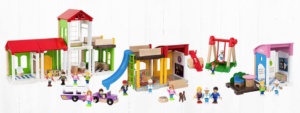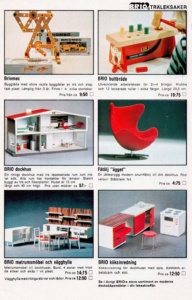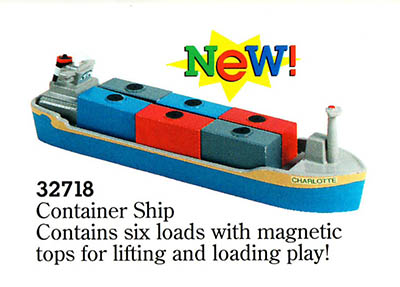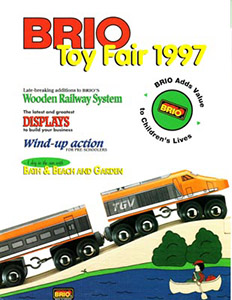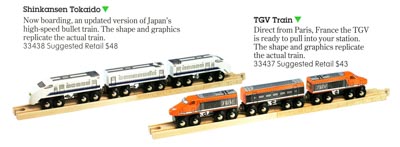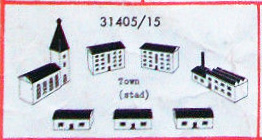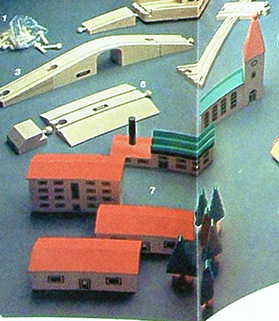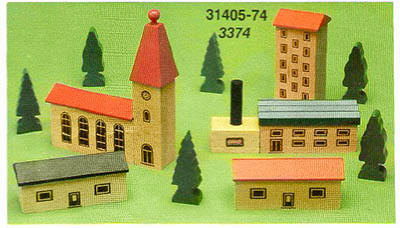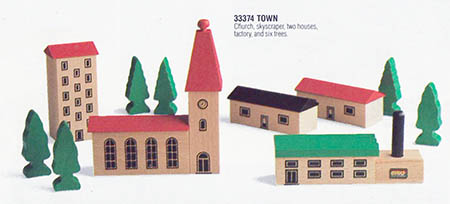Every now and then eBay you come across one of these little tanker cars:
In fact, there is one for sale as I am writing this, and this photo comes from that auction.
What’s interesting about these cars is that they have all the signs of a genuine BRIO part: the tank load and its magnet, the wagon and its magnets, and the wheels are all correct. And, of course, the stamped hubs are a dead giveaway. The only catch is: BRIO never made parts with a GATX logo. So what’s going on here?
The answer is that this is an aftermarket customization, made by a marketing company that specializes in customizing toys. It’s not fundamentally different than buying pens that are engraved with your company’s logo, it’s just a bit more sophisticated and, of course, costly to custom-paint a toy. The idea of customizing a toy to a corporate logo has been common in the toy industry for quite a while (Matchbox cars were a popular item for this treatment).
In this case, GATX—formerly known as the General American Transportation Corporation—commissioned these toys and made them available for sale to employees in the mid-to-late 1990’s. I received my set from a seller who worked for GATX Rail at that time, and he was able to give me some of the history behind it. The rest was pieced together from another seller and a little bit of digging.
At least two sets were made. Mine, shown above, is a full starter set with 8xE tracks, a classic engine, a black freight engine, and three tanker cars with the GATX logo. The “GATX 100” car, in gold, was created for GATX’s 100th anniversary in 1998.
The second set is smaller, consisting of a single GATX car in green and blue, 4xE tracks, and a US-style railroad crossing sign taken from the Thomas the Tank Engine line. The following photos of this set are from an old eBay auction:
The quality of these parts is extraordinary. The paint job is even and clean, there is no sign that the wheels were damaged when the base was painted, or is there any stray paint on the wheels themselves. The logos are crisply lettered. And of course there is custom-fit cardboard packaging.
What’s even more extraordinary is that GATX used the wooden railway theme in their corporate literature. The following two scans are from their Tank and Freight Car Manual, official publications from GATX that detail the mechanical specifications of their railway cars.
The color cover is from 1996. The black and white cover is from 1994.
Even more amazing? GATX produced a promotional rail car. A full-size rail car, painted to match the BRIO toy!
This photo comes from the RR Picture Archives (photo credit: Matt Adams, July of 2005). Fellow collector Dave Pecota pointed out that GATX is one of the largest lessors of rail cars in the world, and their paint shops can turn out custom cars quickly and easily. Given their 100 year anniversary, some celebratory merchandise and special rail cars would certainly be in order. And, this is not uncommon in the rail industry in general.
These aftermarket sets are truly special. Though not “true” BRIO, they are high-quality customization jobs, made by professionals who specialize in this work. If you can find a promo set like this, I say jump at the chance. You are buying the history of two companies, and getting a story to go with it.
